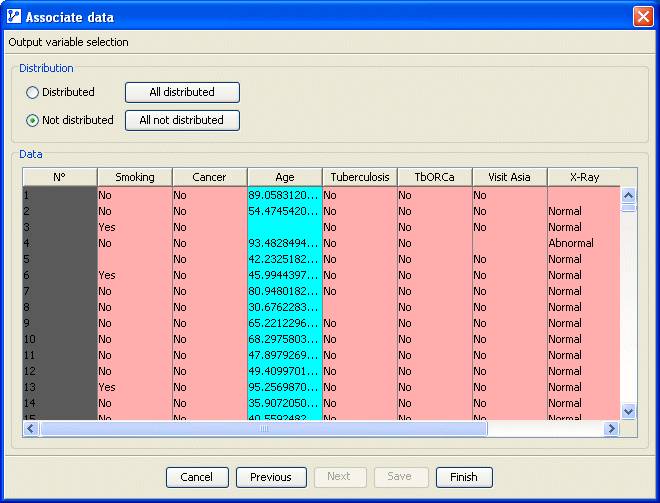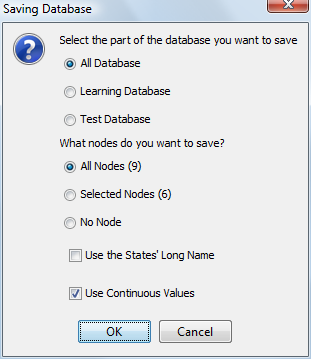Our team is currently rewriting this page, along with many other sections of this website, to reflect the features of the latest release of BayesiaLab. So, please consider this a work in progress and excuse errors, broken links, and missing images.
Batch Inference
For each node that is declared as Not Observable (see Costs), we compute, for each case described in the associated dataset or Evidence Scenario File, the a posteriori probability distribution of the node.
The results are stored in an exploitation file that takes the selected fields of the input file and associates, for each state of each not observable node, the computed probability. The corresponding expected value is also computed, if possible, for each not observable node and stored in the database. The expected value is computed from the values associated with the states of the node. If there is no associated value, the expected values use the mean of each interval for a continuous node or the integer or real states for a Discrete Node. If it is not possible to compute these values, then, there is no expected value.
If the data source is an external database, the fields of the input file that are included in the exploitation file are selected via the wizard illustrated below:

If the data source is the associated dataset, a dialog allows the user to choose on which part of the database (all, learning or test) the operation is done and which nodes will be saved in the destination file. It is also possible to choose if the state’s long names are used and if the continuous values are saved:

The observations are done according to the Cost of each node: if a node is not observable, it won’t be observed even if there is a corresponding value in the associated database.
